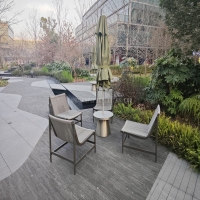Welcome to the website for landscape facilities products and knowledge.
How does the table’s design account for varying levels of user community engagement?
Modern table design represents a sophisticated approach to accommodating diverse user participation patterns within digital communities. At its core lies a flexible architecture that intuitively responds to different engagement intensities, creating an inclusive environment for both casual observers and dedicated contributors.
For passive participants who primarily consume content, tables employ minimalist layouts with clear visual hierarchies. These designs feature streamlined information architecture, reduced interaction points, and prominent visual cues that guide users without overwhelming them. The strategic use of white space and progressive disclosure mechanisms ensures newcomers can navigate content effortlessly while maintaining access to deeper functionality when needed.
Active community members encounter more complex table configurations that support advanced interactions. These designs incorporate expandable sections, sortable columns, and customizable viewing options. The interface dynamically reveals additional controls—such as filtering tools, bulk action menus, and collaborative editing features—based on detected engagement patterns. This adaptive approach prevents feature overload while empowering power users with sophisticated tools.
Highly engaged contributors experience tables as comprehensive workbenches. The design transforms to include real-time collaboration indicators, version history tracking, and advanced data manipulation capabilities. These tables often integrate social elements like user attribution badges and comment threads directly within the interface, fostering community interaction while maintaining structural clarity.
The most innovative table implementations employ machine learning to personalize user experiences. By analyzing individual interaction histories, these systems automatically adjust information density, highlight relevant data points, and suggest collaborative opportunities. This creates a self-optimizing interface that evolves alongside community participation levels.
Accessibility considerations are woven throughout these design strategies. Tables maintain consistent keyboard navigation and screen reader compatibility across all engagement modes, ensuring equitable access regardless of participation intensity. The visual design employs color-coding and iconography that remains meaningful at various interaction levels without compromising aesthetic coherence.
Ultimately, successful table design functions as a dynamic framework that mirrors organic community development. It scales from supporting individual content discovery to facilitating complex group collaborations, all while maintaining intuitive usability. This multi-layered approach acknowledges that user engagement exists on a spectrum, and provides appropriate tools for every point along that continuum.
Related search:

Recommendation
Metal structure rattan chair without armrests for single person, with woven seat and backrest.